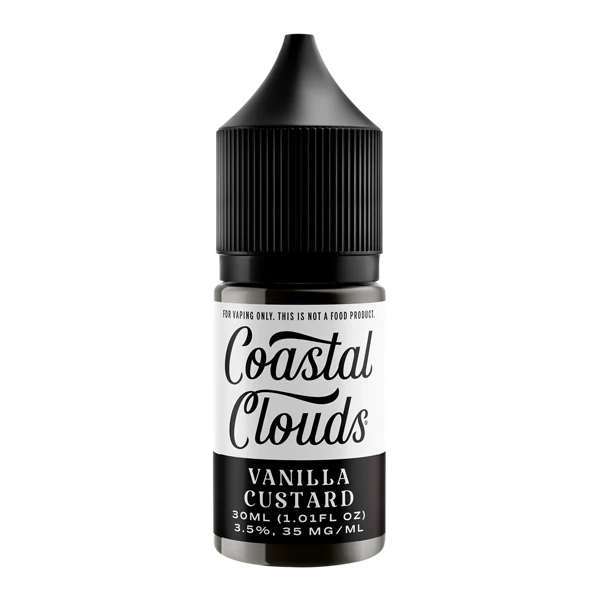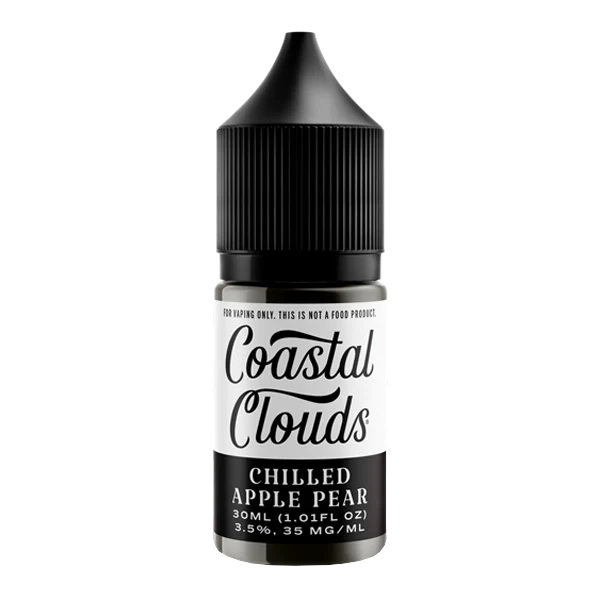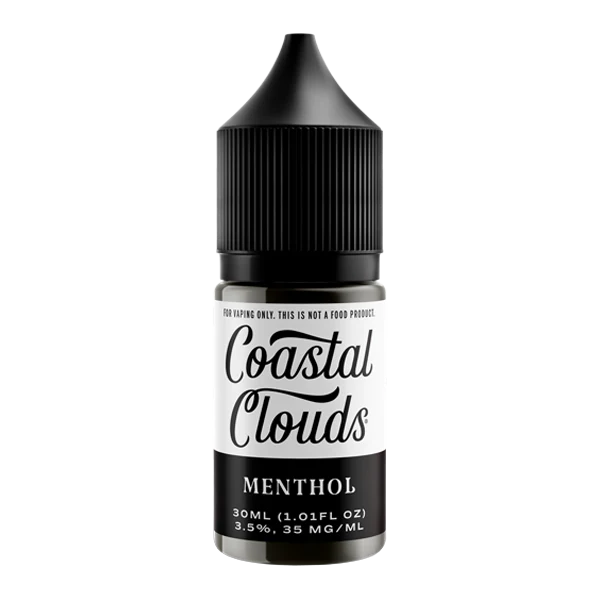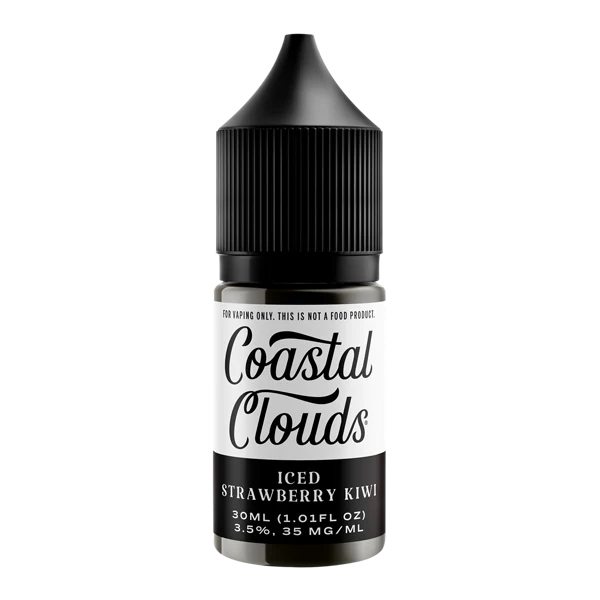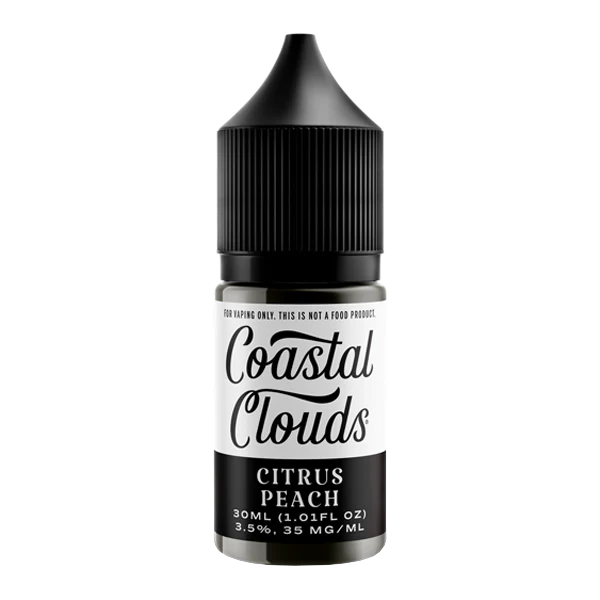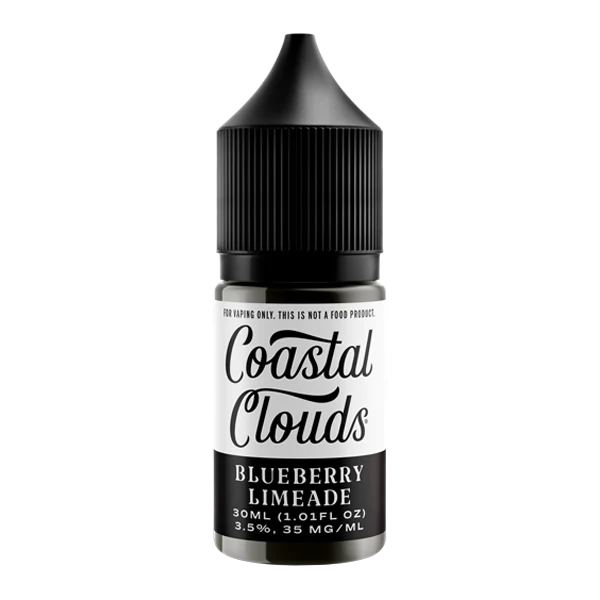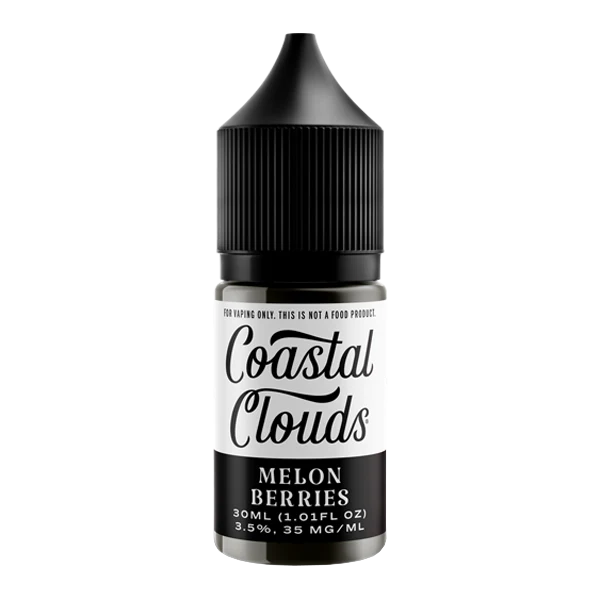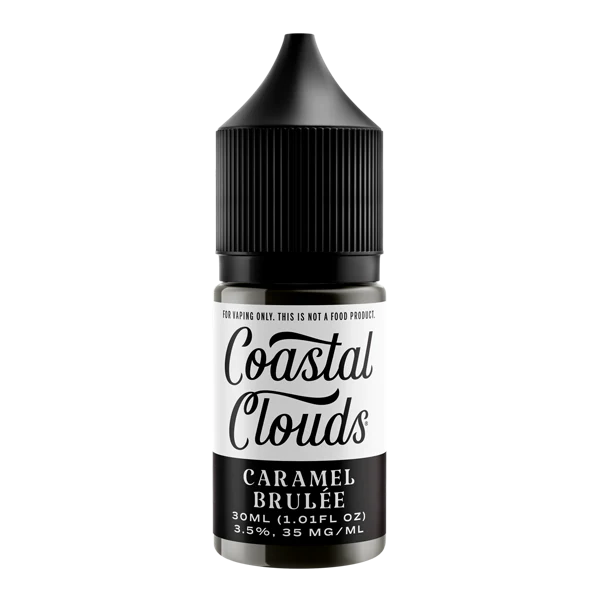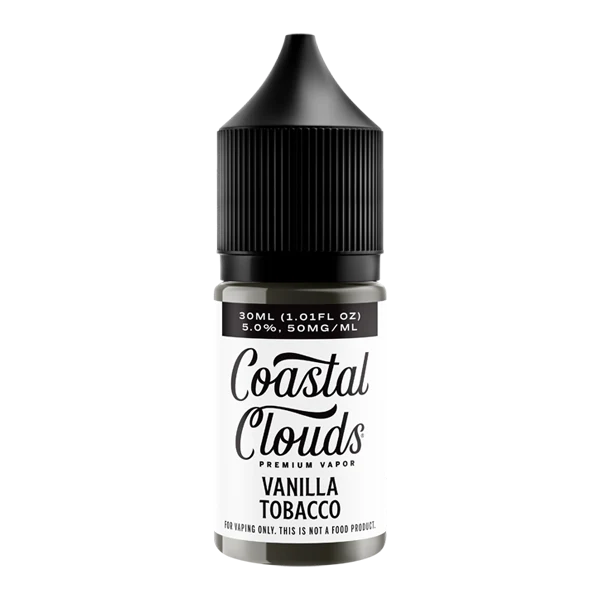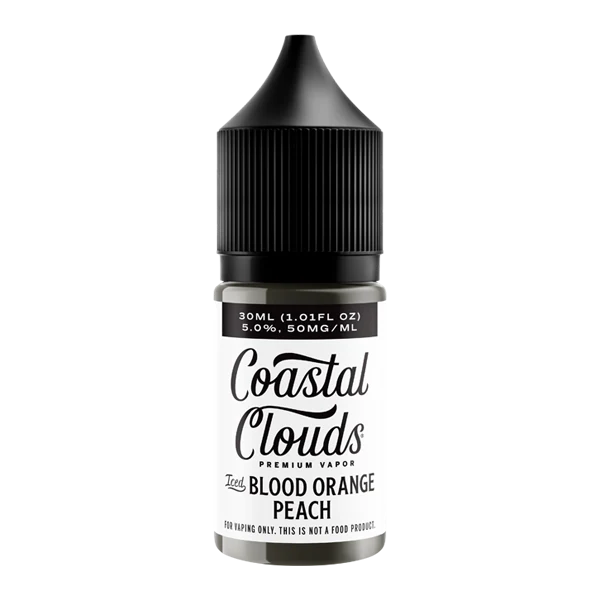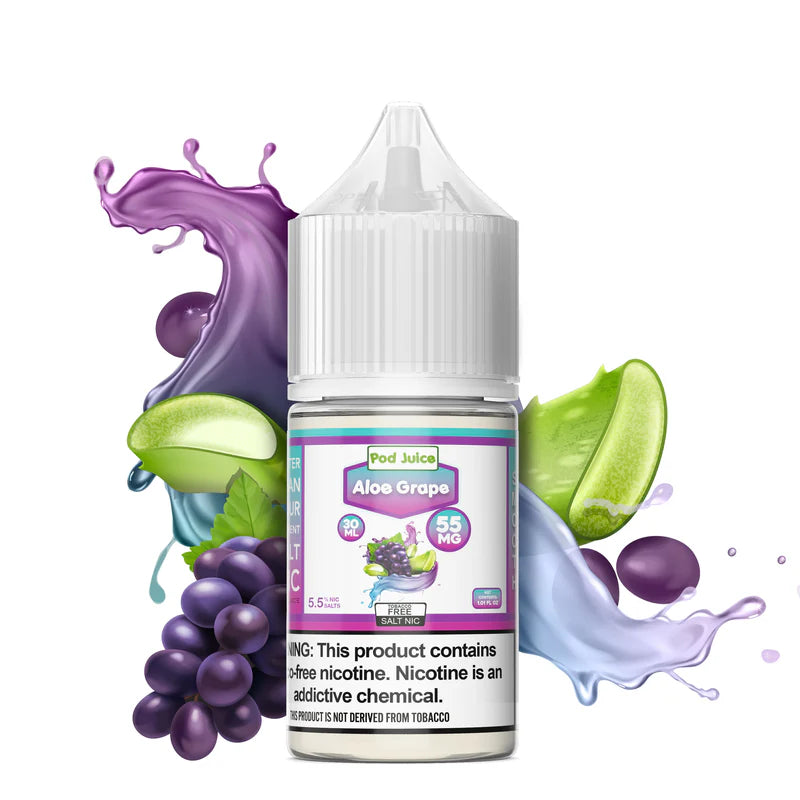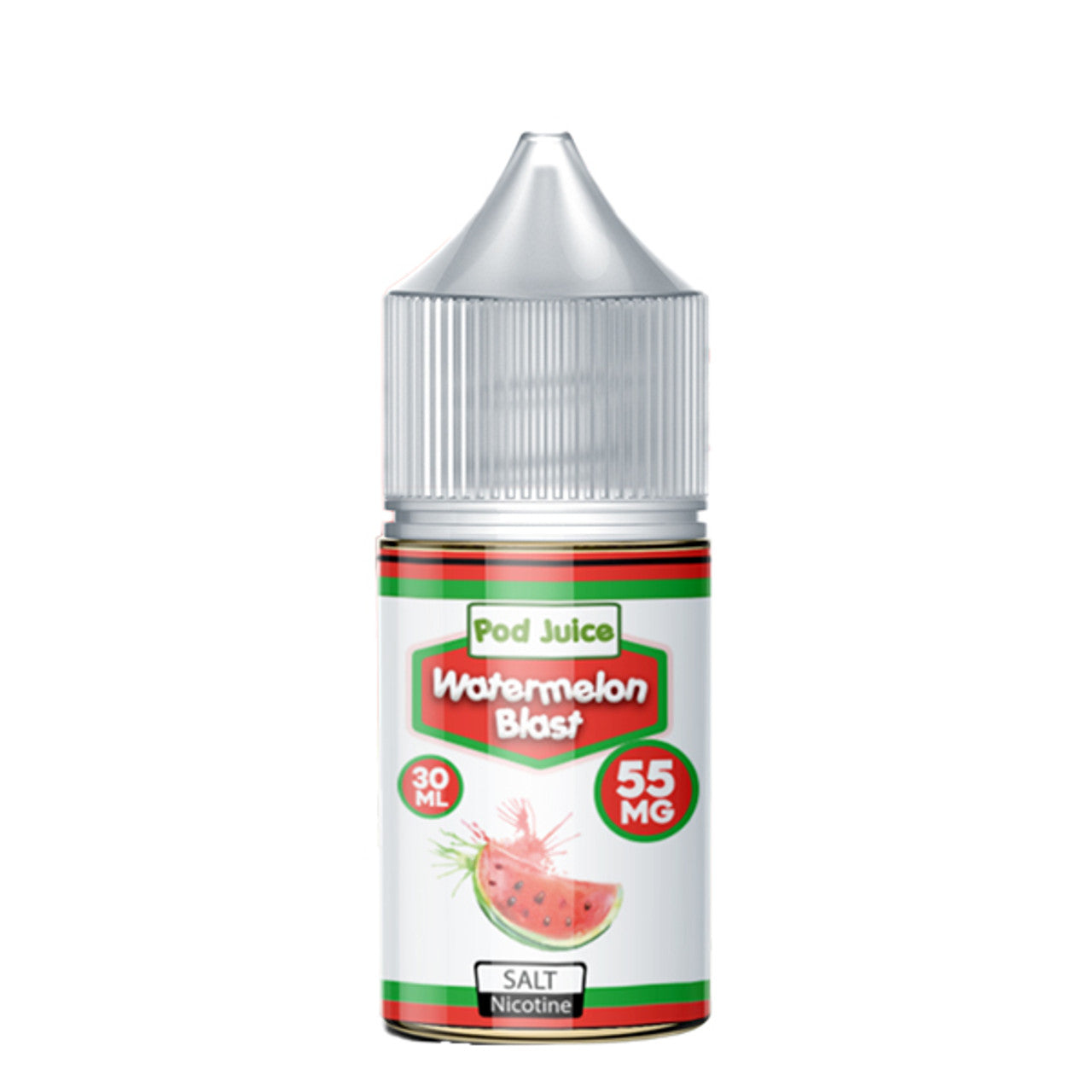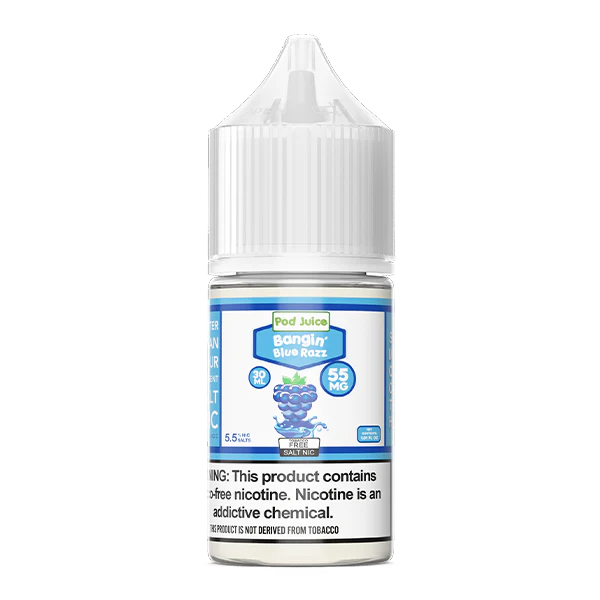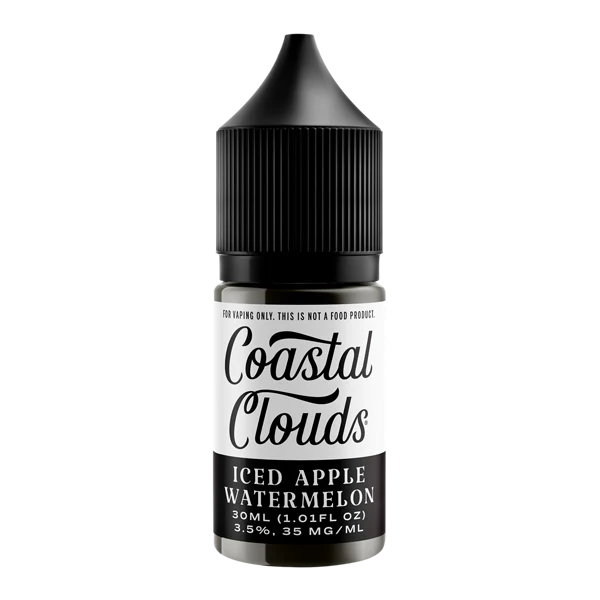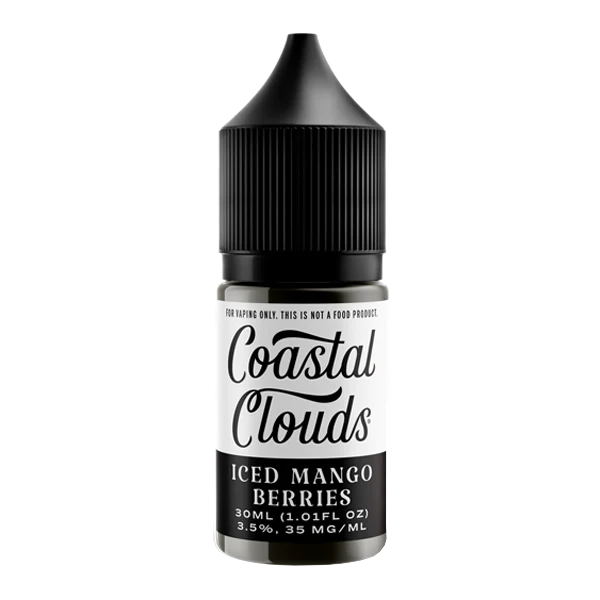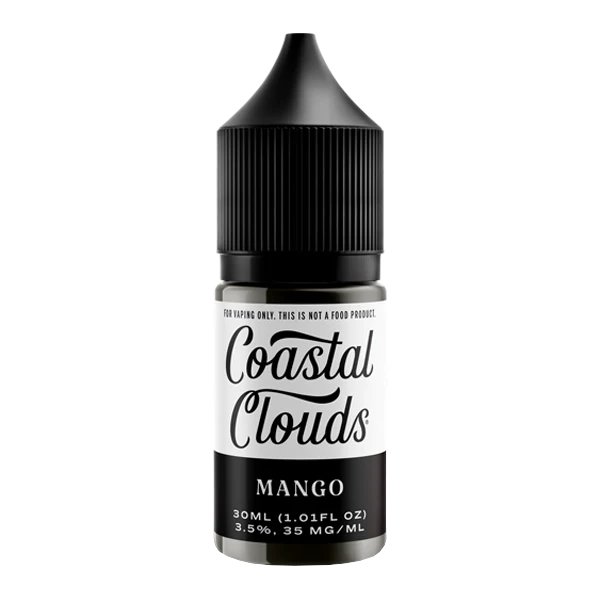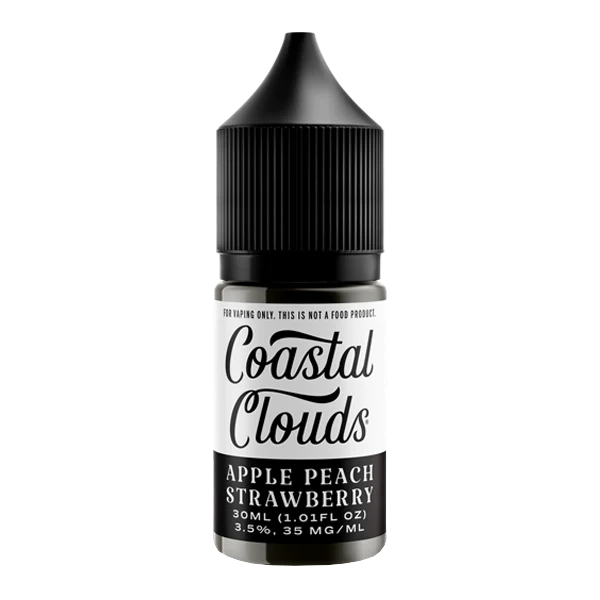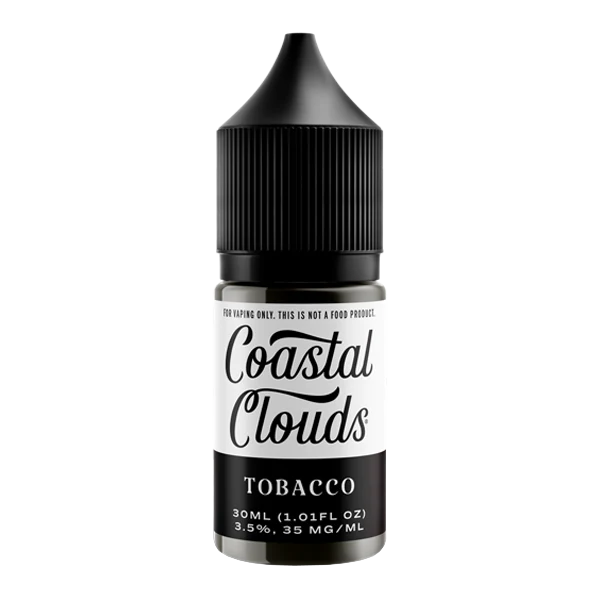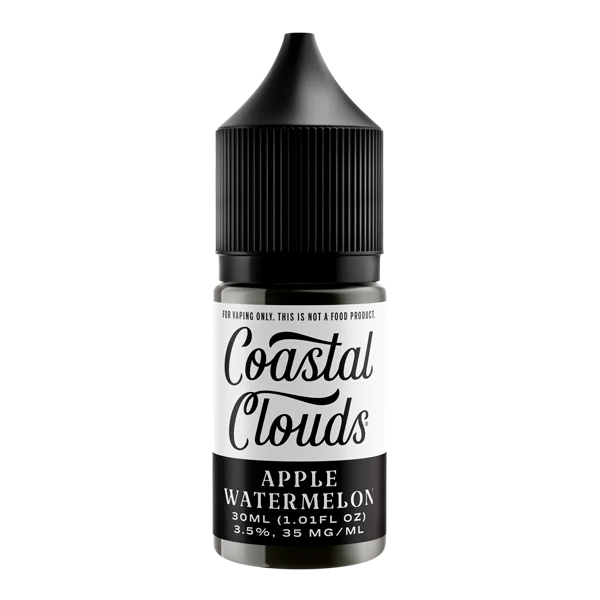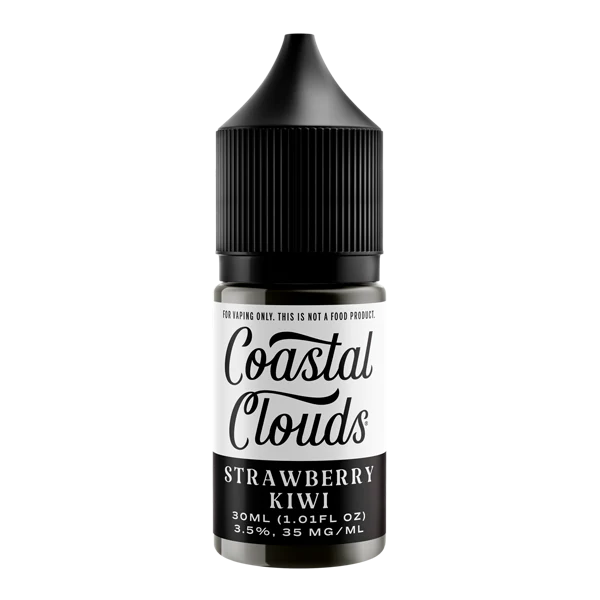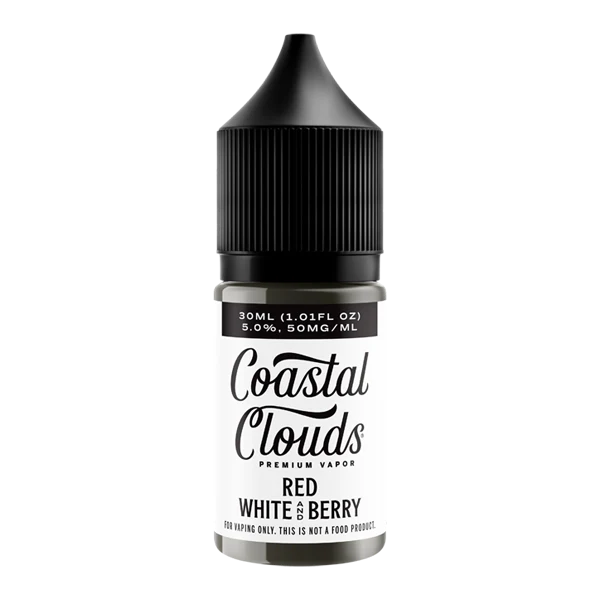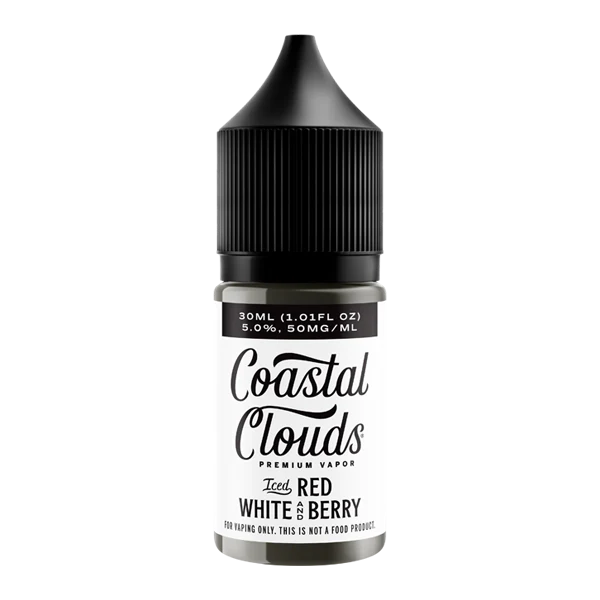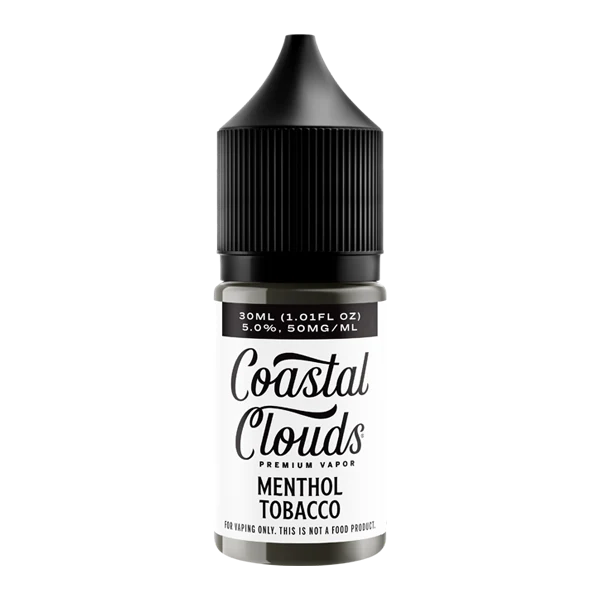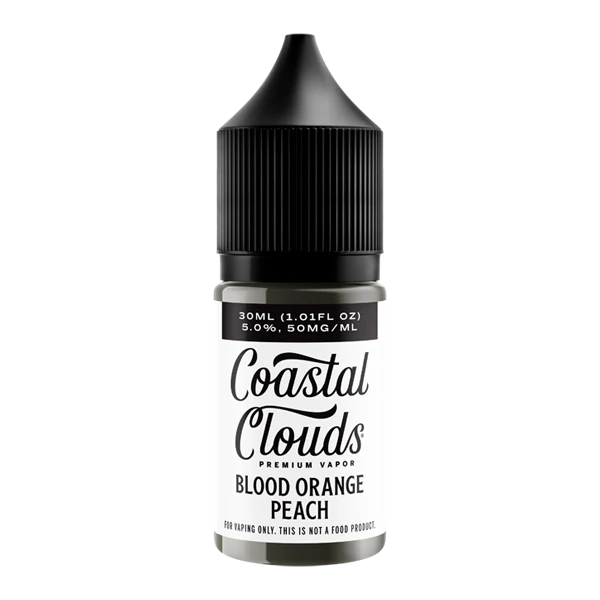-
Vanilla Custard by Coastal Clouds Salt Nic 30ml
Vanilla Custard by Coastal Clouds Salt Nic 30ml Vanilla Custard by Coastal Clouds Salt Nic offers a rich and creamy dessert experience with the smooth sweetness...
Regular price $9.97Sale price $9.97 Regular priceUnit price per$15.97Sale Sold out -
Chilled Apple Pear by Coastal Clouds Salt Nic 30ml
Chilled Apple Pear by Coastal Clouds Salt Nic 30ml Chilled Apple Pear by Coastal Clouds Salt Nic blends the crisp bite of fresh apples with the...
Regular price $9.97Sale price $9.97 Regular priceUnit price per$15.97Sale Sold out -
Menthol by Coastal Clouds Salt Nic 30ml
Menthol by Coastal Clouds Salt Nic 30ml Menthol by Coastal Clouds Salt Nic delivers a crisp and refreshing vape with the clean taste of fresh mint,...
Regular price $9.97Sale price $9.97 Regular priceUnit price per$15.97Sale Sold out -
Iced Strawberry Kiwi by Coastal Clouds Salt Nic 30ml
Iced Strawberry Kiwi by Coastal Clouds Salt Nic 30ml Iced Strawberry Kiwi by Coastal Clouds Salt Nic blends the sweetness of ripe, juicy strawberries with the...
Regular price $9.97Sale price $9.97 Regular priceUnit price per$15.97Sale Sold out -
Citrus Peach (Sugared Nectarine) by Coastal Clouds Salt Nic 30ml
Citrus Peach (Sugared Nectarine) by Coastal Clouds Salt Nic 30ml Citrus Peach (Sugared Nectarine) by Coastal Clouds Salt Nic pairs the juicy sweetness of ripe peaches...
Regular price $9.97Sale price $9.97 Regular priceUnit price per$15.97Sale Sold out -
Blueberry Limeade by Coastal Clouds Salt Nic 30ml
Blueberry Limeade by Coastal Clouds Salt Nic 30ml Blueberry Limeade by Coastal Clouds Salt Nic combines the tangy zest of refreshing limeade with the sweet, juicy...
Regular price $9.97Sale price $9.97 Regular priceUnit price per$15.97Sale Sold out -
Melon Berries by Coastal Clouds Salt Nic 30ml
Melon Berries by Coastal Clouds Salt Nic 30ml Melon Berries by Coastal Clouds Salt Nic is a vibrant fruit blend that pairs juicy watermelon with the...
Regular price $9.97Sale price $9.97 Regular priceUnit price per$15.97Sale Sold out -
Caramel Brulee by Coastal Clouds Salt Nic 30ml
Caramel Brulee by Coastal Clouds Salt Nic 30ml Caramel Brulee by Coastal Clouds Salt Nic is a decadent dessert-inspired blend featuring the rich, buttery sweetness of...
Regular price $9.97Sale price $9.97 Regular priceUnit price per$15.97Sale Sold out -
Vanilla Tobacco by Coastal Clouds Salt Nic 30ml
Vanilla Tobacco by Coastal Clouds Salt Nic 30ml Vanilla Tobacco by Coastal Clouds Salt Nic combines the smooth sweetness of creamy vanilla with the deep, earthy...
Regular price $9.97Sale price $9.97 Regular priceUnit price per$15.97Sale Sold out -
Iced Blood Orange Peach by Coastal Clouds Salt Nic 30ml
Iced Blood Orange Peach by Coastal Clouds Salt Nic 30ml Experience a tropical twist with Iced Blood Orange Peach by Coastal Clouds Salt Nic. This invigorating...
Regular price $9.97Sale price $9.97 Regular priceUnit price per$15.97Sale Sold out -
Aloe Grape Pod Juice Salt 30ml
Aloe Grape Pod Juice Salt 30mL Flavor Pod Juice Aloe Grape Salt offers a refreshing blend of sweet, ripe table grapes complemented by the subtle, soothing...
Regular price $10.99Sale price $10.99 Regular priceUnit price per$19.99Sale Sold out -
Watermelon Blast Pod Juice Salt 30ml
Watermelon Blast Pod Juice Salt 30mL Flavor Watermelon Blast by Pod Juice Salt delivers a refreshing, ripe watermelon flavor that captures the essence of summer in...
Regular price $10.99Sale price $10.99 Regular priceUnit price per$19.99Sale Sold out -
Bangin Blue Razz Pod Juice salt 30ml
Bangin Blue Razz Pod Juice Salt 30mL Flavor Bangin Blue Razz by Pod Juice Salt delivers an explosion of tangy, sweet blue raspberry flavor that’s both...
Regular price $10.99Sale price $10.99 Regular priceUnit price per$19.99Sale Sold out -
Ice Apple Watermelon by Coastal Clouds Salt Nic 30ml
Ice Apple Watermelon by Coastal Clouds Salt Nic 30ml Iced Apple Watermelon by Coastal Clouds Salt Nic blends the juicy sweetness of ripe watermelon with the...
Regular price $9.97Sale price $9.97 Regular priceUnit price per$15.97Sale Sold out -
Iced Mango Berries by Coastal Clouds Salt Nic 30ml
Iced Mango Berries by Coastal Clouds Salt Nic 30ml Iced Mango Berries by Coastal Clouds Salt Nic combines the tropical sweetness of ripe mangos with fresh...
Regular price $9.97Sale price $9.97 Regular priceUnit price per$15.97Sale Sold out -
Mango by Coastal Clouds Salt Nic 30ml
Mango by Coastal Clouds Salt Nic 30ml Mango by Coastal Clouds Salt Nic captures the lush, tropical sweetness of ripe mangos in a smooth nicotine salt...
Regular price $9.97Sale price $9.97 Regular priceUnit price per$15.97Sale Sold out -
Apple Peach Strawberry by Coastal Clouds Salt Nic 30ml
Apple Peach Strawberry by Coastal Clouds Salt Nic 30ml Apple Peach Strawberry by Coastal Clouds Salt Nic blends crisp apples, succulent peaches, and sweet, ripe strawberries...
Regular price $9.97Sale price $9.97 Regular priceUnit price per$15.97Sale Sold out -
Tobacco by Coastal Clouds Salt Nic 30ml
Tobacco by Coastal Clouds Salt Nic 30ml Tobacco by Coastal Clouds Salt Nic delivers the bold, earthy richness of classic tobacco in a smooth nicotine salt...
Regular price $9.97Sale price $9.97 Regular priceUnit price per$15.97Sale Sold out -
Apple Watermelon by Coastal Clouds Salt Nic 30ml
Apple Watermelon by Coastal Clouds Salt Nic 30ml Apple Watermelon by Coastal Clouds Salt Nic blends the crisp tartness of green apples with the juicy sweetness...
Regular price $9.97Sale price $9.97 Regular priceUnit price per$15.97Sale Sold out -
Strawberry Kiwi by Coastal Clouds Salt Nic 30ml
Strawberry Kiwi by Coastal Clouds Salt Nic 30ml Strawberry Kiwi by Coastal Clouds Salt Nic delivers a refreshing burst of ripe, juicy strawberries blended with the...
Regular price $9.97Sale price $9.97 Regular priceUnit price per$15.97Sale Sold out -
Red White and Berry by Coastal Clouds Salt Nic 30ml
Red White and Berry by Coastal Clouds Salt Nic 30ml Red White and Berry by Coastal Clouds Salt Nic is a vibrant fruit medley that bursts...
Regular price $9.97Sale price $9.97 Regular priceUnit price per$15.97Sale Sold out -
Iced Red White and Berry by Coastal Clouds Salt Nic 30ml
Iced Red White and Berry by Coastal Clouds Salt Nic 30ml Iced Red White and Berry by Coastal Clouds Salt Nic delivers a bold burst of...
Regular price $9.97Sale price $9.97 Regular priceUnit price per$15.97Sale Sold out -
Menthol Tobacco by Coastal Clouds Salt Nic 30ml
Menthol Tobacco by Coastal Clouds Salt Nic 30ml Menthol Tobacco by Coastal Clouds Salt Nic blends the classic, robust taste of tobacco with the crisp freshness...
Regular price $9.97Sale price $9.97 Regular priceUnit price per$15.97Sale Sold out -
Blood Orange Peach by Coastal Clouds Salt Nic 30ml
Blood Orange Peach by Coastal Clouds Salt Nic 30ml Indulge in a refreshing citrus-and-fruit fusion with Coastal Clouds Salt Nic Blood Orange Peach. Each puff delivers...
Regular price $9.97Sale price $9.97 Regular priceUnit price per$15.97Sale Sold out
Free Shipping on Orders over $79.99 !
Free Shipping on Orders over $79.99 !
Free Shipping on Orders over $79.99 !
Free Shipping on Orders over $79.99 !
Free Shipping on Orders over $79.99 !
Free Shipping on Orders over $79.99 !
Free Shipping on Orders over $79.99 !
Free Shipping on Orders over $79.99 !
Free Shipping on Orders over $79.99 !
Free Shipping on Orders over $79.99 !
Free Shipping on Orders over $79.99 !
Free Shipping on Orders over $79.99 !
Free Shipping on Orders over $79.99 !
Free Shipping on Orders over $79.99 !
Free Shipping on Orders over $79.99 !
Free Shipping on Orders over $79.99 !
Free Shipping on Orders over $79.99 !
Free Shipping on Orders over $79.99 !
Free Shipping on Orders over $79.99 !
Free Shipping on Orders over $79.99 !
Free Shipping on Orders over $79.99 !
Free Shipping on Orders over $79.99 !
Free Shipping on Orders over $79.99 !
Free Shipping on Orders over $79.99 !
Free Shipping on Orders over $79.99 !
Free Shipping on Orders over $79.99 !
Free Shipping on Orders over $79.99 !
Free Shipping on Orders over $79.99 !
Free Shipping on Orders over $79.99 !
Free Shipping on Orders over $79.99 !
Free Shipping on Orders over $79.99 !
Free Shipping on Orders over $79.99 !
Free Shipping on Orders over $79.99 !
Free Shipping on Orders over $79.99 !
Free Shipping on Orders over $79.99 !
Free Shipping on Orders over $79.99 !
Free Shipping on Orders over $79.99 !
Free Shipping on Orders over $79.99 !
Free Shipping on Orders over $79.99 !
Free Shipping on Orders over $79.99 !
Free Shipping on Orders over $79.99 !
Free Shipping on Orders over $79.99 !
Free Shipping on Orders over $79.99 !
Free Shipping on Orders over $79.99 !
Free Shipping on Orders over $79.99 !
Free Shipping on Orders over $79.99 !
Free Shipping on Orders over $79.99 !
Free Shipping on Orders over $79.99 !
Free Shipping on Orders over $79.99 !
Free Shipping on Orders over $79.99 !
Free Shipping on Orders over $79.99 !
Free Shipping on Orders over $79.99 !
Free Shipping on Orders over $79.99 !
Free Shipping on Orders over $79.99 !
Free Shipping on Orders over $79.99 !
Free Shipping on Orders over $79.99 !
Free Shipping on Orders over $79.99 !
Free Shipping on Orders over $79.99 !
Free Shipping on Orders over $79.99 !
Free Shipping on Orders over $79.99 !
Free Shipping on Orders over $79.99 !
Free Shipping on Orders over $79.99 !
Free Shipping on Orders over $79.99 !
Free Shipping on Orders over $79.99 !
Free Shipping on Orders over $79.99 !
Free Shipping on Orders over $79.99 !
Free Shipping on Orders over $79.99 !
Free Shipping on Orders over $79.99 !
Free Shipping on Orders over $79.99 !
Free Shipping on Orders over $79.99 !
Free Shipping on Orders over $79.99 !
Free Shipping on Orders over $79.99 !
Free Shipping on Orders over $79.99 !
Free Shipping on Orders over $79.99 !
Free Shipping on Orders over $79.99 !
Free Shipping on Orders over $79.99 !
Free Shipping on Orders over $79.99 !
Free Shipping on Orders over $79.99 !
Free Shipping on Orders over $79.99 !
Free Shipping on Orders over $79.99 !
Free Shipping on Orders over $79.99 !
Free Shipping on Orders over $79.99 !
Free Shipping on Orders over $79.99 !
Free Shipping on Orders over $79.99 !
Free Shipping on Orders over $79.99 !
Free Shipping on Orders over $79.99 !
Free Shipping on Orders over $79.99 !
Free Shipping on Orders over $79.99 !
Free Shipping on Orders over $79.99 !
Free Shipping on Orders over $79.99 !
Free Shipping on Orders over $79.99 !
Free Shipping on Orders over $79.99 !
Free Shipping on Orders over $79.99 !
Free Shipping on Orders over $79.99 !
Free Shipping on Orders over $79.99 !
Free Shipping on Orders over $79.99 !
Free Shipping on Orders over $79.99 !
Free Shipping on Orders over $79.99 !
Free Shipping on Orders over $79.99 !
Free Shipping on Orders over $79.99 !
Free Shipping on Orders over $79.99 !
Free Shipping on Orders over $79.99 !
Free Shipping on Orders over $79.99 !
Free Shipping on Orders over $79.99 !
Free Shipping on Orders over $79.99 !
Free Shipping on Orders over $79.99 !
Free Shipping on Orders over $79.99 !
Free Shipping on Orders over $79.99 !
Free Shipping on Orders over $79.99 !
Free Shipping on Orders over $79.99 !
Free Shipping on Orders over $79.99 !
Free Shipping on Orders over $79.99 !
Free Shipping on Orders over $79.99 !
Free Shipping on Orders over $79.99 !
Free Shipping on Orders over $79.99 !
Free Shipping on Orders over $79.99 !
Free Shipping on Orders over $79.99 !
Free Shipping on Orders over $79.99 !
Free Shipping on Orders over $79.99 !
Free Shipping on Orders over $79.99 !
Free Shipping on Orders over $79.99 !
Free Shipping on Orders over $79.99 !
Free Shipping on Orders over $79.99 !
Free Shipping on Orders over $79.99 !
Free Shipping on Orders over $79.99 !
Free Shipping on Orders over $79.99 !
Free Shipping on Orders over $79.99 !
Free Shipping on Orders over $79.99 !
Free Shipping on Orders over $79.99 !
Free Shipping on Orders over $79.99 !
Free Shipping on Orders over $79.99 !
Free Shipping on Orders over $79.99 !
Free Shipping on Orders over $79.99 !
Free Shipping on Orders over $79.99 !
Free Shipping on Orders over $79.99 !
Free Shipping on Orders over $79.99 !
Free Shipping on Orders over $79.99 !
Free Shipping on Orders over $79.99 !
Free Shipping on Orders over $79.99 !
Free Shipping on Orders over $79.99 !
Free Shipping on Orders over $79.99 !
Free Shipping on Orders over $79.99 !
Free Shipping on Orders over $79.99 !
Free Shipping on Orders over $79.99 !
Free Shipping on Orders over $79.99 !
Free Shipping on Orders over $79.99 !
Free Shipping on Orders over $79.99 !
Free Shipping on Orders over $79.99 !
Free Shipping on Orders over $79.99 !
Free Shipping on Orders over $79.99 !

